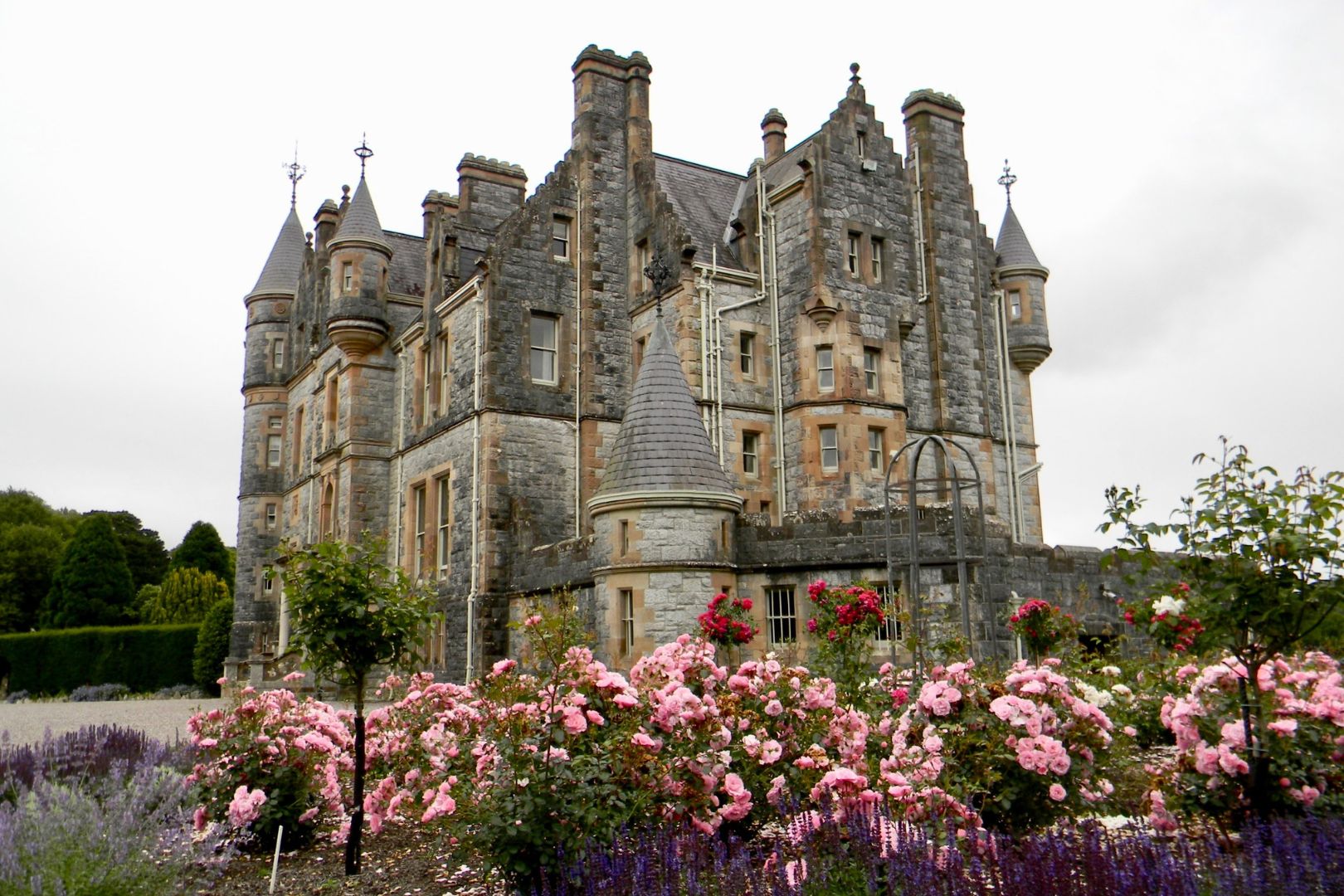Why old Victorian houses give us the creeps
Wednesday, Oct 29, 2025 • Brian Lopez : Contact

For more than a century, Victorian-era homes have served as the backdrop for ghost stories, haunted houses and some of Hollywood’s scariest movies.
There’s just something about these grand old houses—the asymmetrical towers, the creaky floors, the shadowy corners—that gives off spooky vibes.
But why? What is it about the design that oozes eerie instead of cozy?
We spoke with Marisa Gomez, an architecture lecturer at The University of Texas at Arlington, about how history, design and imagination combined to make the Victorian houses a timeless symbol of the supernatural and the ultimate haunted house.
What defines a house as “Victorian”?
Gomez: The term Victorian refers to the period of Queen Victoria’s reign (1837–1901), when many architectural trends emerged and faded. In the 19th century, design ideas spread through plan catalogs rather than social media. One influential figure was Andrew Jackson Downing, whose books “Cottage Residences” (1842) and “The Architecture of Country Houses” (1848) introduced Americans to a picturesque, nature-inspired style.
Downing popularized the Gothic Revival, which borrowed features from medieval cathedrals—like pointed arches and decorative wooden trims—and framed the home as a moral refuge from industrial life. Women were seen as spiritual leaders within this idealized domestic space. As the century progressed, industrial tools made decorative components cheaper, fueling a desire for individuality and more elaborate designs. These homes—with turrets, fish-scale shingles and cast-iron fences—are what we now think of as Victorian. Despite their extravagance, they retained the ideal of a single-family home nestled on a quiet lot just beyond the city.

What makes Victorian homes feel eerie or unsettling?
Gomez: Many Victorian houses fell into disrepair in the 20th century. The reasons for this are complex, but center on changing social and economic conditions. In the late 19th and early 20th centuries, many working-class Americans sought higher wages in factories in the country’s growing cities and moved out of service jobs. With less domestic help, keeping up with a large Victorian home—and the elaborate social rituals it houses—became impractical for middle- and upper-class women.
At the same time, social movements like Progressivism emphasized economy and efficiency in all aspects of life, while new scientific knowledge on the spread of disease made homes with simple lines and sparse interiors appealing because they’d be easier to keep clean. All of this made new styles with clean lines, such as the Craftsman bungalow, more attractive. Victorian houses, meanwhile, were either carved up into apartments or left to decay in the innermost ring of American suburbs. But in a way, the picturesque character of Victorian design is only heightened by decay: Vines creeping over a twisted cast-iron fence or up the sides of a crooked turret enhance the aesthetic qualities that made the style appealing in the first place. The asymmetrical qualities of Victorian design prevent us from having a holistic picture of the form from a single angle, piquing our curiosity. We’re at once intrigued by the mystery and perhaps a bit nervous about what we might discover around the next corner.
Why do people link Victorian houses with ghosts or tragedy?
Gomez: Victorian houses have long loomed in the popular imagination. A great example is William Faulkner’s ghoulish tale “A Rose for Emily” (1930). In the story, the town recluse, Miss Emily Grierson, resides in a derelict Victorian mansion described as “decorated with cupolas and spires and scrolled balconies in the heavily lightsome style of the seventies,” which has become “an eyesore among eyesores.”
First published in The Forum, the story was accompanied by an illustration of a multi-turreted Victorian mansion set on a wooded lot. All the components of the ideal Victorian home appear: fanciful forms, ornate detailing, and even a picket fence to enclose the yard. The house stands untouched by the forces of modernization (both technological and social) that shaped the New South. Its withering form becomes a metaphor for the moral rot of 19th-century Southern society and an ugly reminder of the region’s dark past.
Perhaps this is the enduring power of the abandoned Victorian mansion—they are perennially haunting us with an image of life that was at once more genteel and more cruel. Rotting floorboards and broken windowpanes provoke nostalgia for a past we might not have liked very much had we actually experienced it.
Why have Victorian houses become the classic “haunted house” in pop culture?
Gomez: “A Rose for Emily” is just one of many instances of the Victorian house in popular culture. The contorted silhouette of the Victorian house makes it a fitting setting for the terrifying and uncanny. Consider, for instance, the looming façade of the Bates Motel in Alfred Hitchcock’s Psycho (1960) or the grotesque postmodernist dreamscape created for Tim Burton’s Beetlejuice (1988).
One of my favorites is the decrepit Second Empire residence of the Addams family (1964–66). The opening theme shows the Victorian ideal fallen into ruin, framed by the bony limbs of leafless trees. The only nod to modern times is the jaunty placement of a TV antenna atop the mansard roof. Put in the context of 1960s America, the Victorian setting celebrated individuality at a time when mainstream culture emphasized conformity. “The Addams Family” premiere coincided with a cultural reckoning with the overly tidy image of American life celebrated in shows like Leave It to Beaver (1957–63) and Father Knows Best (1954–60) and performed in the postwar suburban landscape. Places like Levittown, sprawling emblems of mass suburbia, were losing their luster, and the Addams family’s Victorian mansion offered a comic critique of mainstream society by putting a literal “crack in the picture window.”

Does our fascination with old, decaying Victorian houses reflect deeper fears about aging or change?
Gomez: As I see it, the power of historic architecture is its ability to transport us to the past in a visceral way. Just reading about history can feel boring or dull. By contrast, walking through the gaslit halls of a Gothic Revival house, grasping a well-worn wooden banister, or peeling back layer upon layer of wallpaper transports us to another time.
Are there any North Texas examples of Victorian-style buildings that fit this haunted archetype?
Gomez: Unfortunately, much of DFW’s Victorian architecture has been lost to the waves of progress that swept over Texas cities in the 20th century. However, traces of the era can be found throughout the metro area. The city of McKinney, which has only recently been swallowed up by the metroplex, offers some prime examples of Victorian design and a powerful illustration of shifting design trends in the Progressive Era, with its many Craftsman-style bungalows. City Park in Dallas has recently been reopened and offers a great collection of historic buildings, including a few examples of Victorian architecture.
About The University of Texas at Arlington (UTA)
Celebrating its 130th anniversary in 2025, The University of Texas at Arlington is a growing public research university in the heart of the thriving Dallas-Fort Worth metroplex. With a student body of over 42,700, UTA is the second-largest institution in the University of Texas System, offering more than 180 undergraduate and graduate degree programs. Recognized as a Carnegie R-1 university, UTA stands among the nation’s top 5% of institutions for research activity. UTA and its 280,000 alumni generate an annual economic impact of $28.8 billion for the state. The University has received the Innovation and Economic Prosperity designation from the Association of Public and Land Grant Universities and has earned recognition for its focus on student access and success, considered key drivers to economic growth and social progress for North Texas and beyond.
Latest News
- UTA expands brain health researchStudy shows how guided cognitive training may improve brain performance
- UTA’s WERC sets the standard for water researchUTA engineers lead efforts to control flooding and protect Texas communities for decades to come
- Do more with less strain: UTA’s robotic armSoft, air-powered exoskeleton eases muscle fatigue, reduces injuries and boosts workplace safety
- Bitter, sweet and steeped in historyUTA expert shares the story behind the treat, from 16th-century Mexico to chocolate houses in Europe
- UTA study: Just a little movement can lift your moodSwapping just 30 minutes of sitting for light activity boosts energy and mood the next day
- Training tomorrow’s archaeologists for critical careersUTA students gain hands-on experience in cultural resource management, a high-demand field safeguarding historic sites






